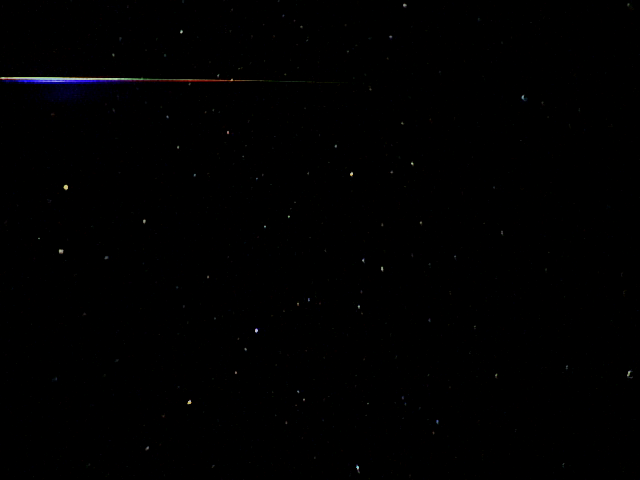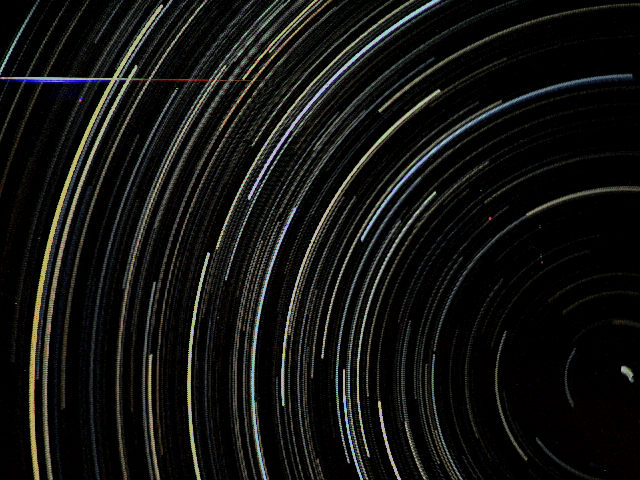

I used the same method I used ten years ago except that the camera I used then didn't work. I had to carry out a very quick and dirty modification of my own, modified ToUcam 840. I removed the cooler and remounted the sensor board in the original mount which holds the original lens. I fixed this to a photographic tripod and stood that on the roof of my new observatory with the cables coming in through the dome. I drove the camera from K3CCDTools which enabled me to take 60-sec exposures continuously through the night. I started the collection as soon as the sky was suitably dark (about 21:00 UT) and collected 250 frames before the lightening morning sky saturated the sensor. The picture below is a single frame from that collection.

This is a single frame from the avi file collected as described above. It was taken at 22:20 UT with an exposure of 60 seconds. The stars are mainly in the constellation of Draco all of which are faint and I find them difficult to identify. The one certain star is the one on the right-hand edge just above the bottom of the frame which is Polaris as evidenced by the picture below. Ursa minor then stretches out to its left. Move your mouse pointer over the image to see what I believe are the correct designations. Assuming these are correct, one can extrapolate the track of the meteor back to the area in Perseus where the radiant of the Perseids is, confirming that this is indeed a Perseid. The meteor moved from right to left in the picture.
This is the only meteor I caught, but the coverage of the camera was quite small.

This image is the stack of all 250 frames captured during 4 hours 14 minutes. The images were stacked in K3CCCDTools using the if-lighter option. This option only adds in a pixel if it is brighter than the corresponding pixel in the stack. This is the only program I know which has this feature and it means that a star in one frame is not averaged away by the dark sky in successive frames as the sky moves. You can see that the star near the bottom right-hand corner of the image is Polaris.
Home This and That